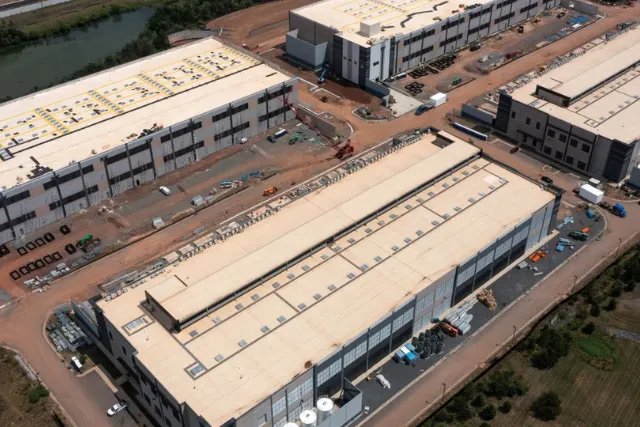
Data centers across the U.S. are racing to adopt flexible power solutions — including advanced battery systems and onsite generators — to keep up with skyrocketing energy demand from AI while limiting grid impacts and sticking to sustainability targets, industry leaders say.

AI-powered data centers could use as much as 33.8 gigawatts of electricity by 2030, Schneider Electric warned earlier this year, equivalent to about 3% of U.S. generating capacity. Some forecasts go much higher: a 2024 RAND Corporation study cited by Schneider pegs potential data center demand at 130 GW by the end of the decade.
As energy demand soars, so does pushback. More than $64 billion in data center investments have been delayed or blocked by local communities and policymakers worried about everything from noise to air pollution. One big concern is the heavy use of onsite power generation and its impact on local grids. In Memphis, Tennessee, Elon Musk’s xAI project recently won an air permit for a fleet of gas generators, despite local resistance.
Meanwhile, new laws aim to protect the grid. Texas now requires new data centers to disconnect from the grid during peak periods. Other states are considering utility tariffs to make data centers pay for grid upgrades. North Carolina will hold a technical conference this fall to study how data centers affect power reliability.
The industry’s huge appetite for electricity will create “short-term growing pains,” warns Kelcy Pegler, CEO of FlexGen, which provides battery management software. “From a societal perspective, we are underestimating the impact that data centers will have on the grid,” Pegler said. “We’re going to have a break-in period where data center ambitions will have trouble coming to fruition.”
To ease the strain, FlexGen has teamed up with major electrical contractor Rosendin to roll out battery-based backup systems that help data centers run more reliably, cut fossil-fuel use, and lower power costs, which can eat up 60% of their operating budgets.

The FlexGen-Rosendin partnership combines Rosendin’s large-scale “BESSUPS” battery system with FlexGen software, enabling data centers to shift smoothly between grid power and self-reliance. “No one saw this coming because no one knew how [powerful] the new chip would be,” Pegler said, pointing to power-hungry NVIDIA chips that demand more robust backup than traditional UPS systems can handle.
Pasi Taimela, FlexGen’s Chief Innovation Officer, called their solution “a smarter, leaner, and more responsive approach to data center energy design that doesn’t require any redesigns inside the walls of the data center.”
The benefit goes beyond the buildings themselves. During peak grid stress — like scorching summer evenings — data centers could run entirely on their own batteries, or even feed surplus power back to the grid if operations can be throttled temporarily. “ChatGPT is willing to say, ‘Sorry, I can’t help you right now,’ but you can imagine a lot of future use cases — like time-sensitive healthcare functions — where ‘I can’t help you right now’ is not an option,” Pegler said.
The power demand swings can be intense. A Wood Mackenzie study found that one hyperscale data center’s consumption dropped by 30% in just five minutes after spiking just as quickly. BESSUPS systems can smooth out these wild voltage swings, protecting both the data center and surrounding communities from damage.
For developers, flexible “bridge” power setups — from batteries and gas turbines to solar — are critical to covering the years-long wait for a full grid connection. “You basically have to overprovision your power capacity, and that is going to have an impact on pricing,” said Jim Grice, who chairs the data center and digital infrastructure practice at Akerman.
While gas generators are still popular, supply chain backlogs are stretching wait times for new units by years. Some developers, like a group behind a $10 billion Pennsylvania project, are promoting plans for fast-track gas power.
Still, many operators aim to stick with clean energy if possible. Rural campuses with more land are weighing large onsite solar installations paired with batteries. “All things being equal, if there’s a site available with solar plus batteries and grid backup, [a data center would] select that over connecting to a grid powered mostly by coal,” Grice said.
Some see promise in novel energy storage, too. Prometheus Hyperscale is testing organic flow batteries at a Wyoming site, aiming to pair them with renewable energy or small nuclear reactors down the line. “If this does work, and we think it will, that gives us a line of sight to acquire and begin to incorporate [flow batteries] into future data centers,” said senior advisor Adam Mirick.
As the digital economy races ahead, the next wave of data centers may depend as much on innovative power strategies as they do on cutting-edge chips.
Originally reported by Brian Martucci in Construction Dive.